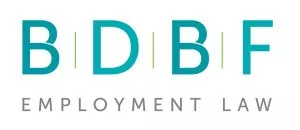On 19 January 2022, the Prime Minister announced that the Plan B contingency measures introduced to tackle the Omicron variant would be lifted, including the working from home guidance. In this briefing, we outline what is changing and what this means for employers.
Working from home
The latest round of working from home guidance came into force on 13 December 2021, with workers told that they should work from home if they could. Exceptions were made for those who could not work from home (for example, where they needed to access equipment necessary for their role, or where their role had to be completed in person). In addition, workers facing mental or physical health challenges, or those with particularly challenging home environments, were allowed to attend the workplace.
This guidance was lifted with effect from 19 January 2022. The Working Safely During Coronavirus Guidance for Offices (Office Guidance) confirms that workers no longer have to work from home. The Guidance says that employers should now talk to staff to agree arrangements to return to the workplace, consulting with workers where appropriate.
The lifting of the guidance means that employers can now resume office working, on a hybrid or full-time basis. However, employers are told they should "remain responsive to workers' needs" and consult with them about health and safety measures in the workplace. In particular, extra consideration should be given to those who are at higher risk of severe illness from COVID and to those facing mental and physical health difficulties. This will include those who are clinically extremely vulnerable, disabled workers and pregnant workers. Special guidance is in place for pregnant workers.
Other changes
The other changes brought about by the lifting of the Plan B restrictions are discussed below.
Face coverings
From 10 December 2021, face coverings were required by law in some public indoor settings, such as theatres and cinemas, but not in hospitality settings. This was in addition to the existing requirement to wear them in shops, cinemas, premises that provide close contact services, transport hubs and on public transport. However, they were not required in office settings.
These requirements were lifted on 27 January 2022. However, people are advised to wear them in crowded and indoor spaces where they may come into contact with people they do not normally meet. The Office Guidance encourages the wearing of face coverings in offices in congested areas (e.g. corridors / lifts etc).
Changes to self-isolation rules
The rules on self-isolation have changed a number of times over recent months. The current default rules are that people infected with COVID-19 must self-isolate for a period of 10 full days. However, since 17 January 2022, it has been possible to be released from self-isolation on or after Day 6, provided the individual has had negative lateral flow tests on two consecutive days (e.g. negative results on Days 5 and 6 would mean release on Day 6). You can read more about these rules here.
The Government has said it intends to scrap self-isolation altogether after the current rules expire on 24 March 2022. The legal rules are likely to be replaced with advice and guidance. Without strict legal rules in place, employers will have to consider their approach to the issue and whether someone who has tested positive for COVID and is feeling well should be prevented from attending work (this is discussed further below).
Isolation and sick pay
Currently, if an employee is legally required to self-isolate, they are entitled to be paid statutory sick pay (SSP), if eligible. In addition, small and medium-sized businesses can recover the cost of SSP for COVID-related sickness absences occurring after 21 December 2021.
When the self-isolation rules change as discussed above, it is likely that entitlement to SSP will also change. There are two scenarios employers will need to deal with:
- Where employees have COVID, and are too unwell to attend work, they should remain entitled to SSP. If eligible, they should also be entitled to company sick pay. In recent weeks, there have been reports of some employers (e.g. Ikea, Next, Ocado, Morrisons and Wessex Water) choosing to cut company sick pay for unvaccinated employees. However, on closer inspection, the removal of company sick pay in these cases only applied to unvaccinated staff who had tested negative for COVID, but who had to self-isolate as a contact of a positive case. (Vaccinated people are excused from self-isolation in such circumstances). It appears that company sick pay was still provided to unvaccinated staff who had tested positive for COVID.
- Where employees have COVID and feel well enough to work, it is not clear whether they will remain entitled to SSP. If such employees are able to work from home, the solution would be to allow them to do so until they recover. However, if they are unable to work from home, should you allow them to attend work or not? If you prevent them from coming to work, how would that absence be treated? If it is treated as a period of enforced sickness absence, how would it be paid? And would it count towards sickness absence management thresholds? Yet, if it is not regarded as sickness absence, how should it be treated and paid? The situation will become clearer over the coming months, but there will be some tricky issues for employers to grapple with.
Covid status checks
From 15 December 2021, certain businesses and events (nightclubs and large venues) were required by law to check the COVID status of both workers and customers using the NHS COVID pass or a negative lateral flow test.
From 27 January 2022, this requirement was lifted, although affected businesses may choose to continue with these measures on a voluntary basis.
The content of this article is intended to provide a general guide to the subject matter. Specialist advice should be sought about your specific circumstances.

